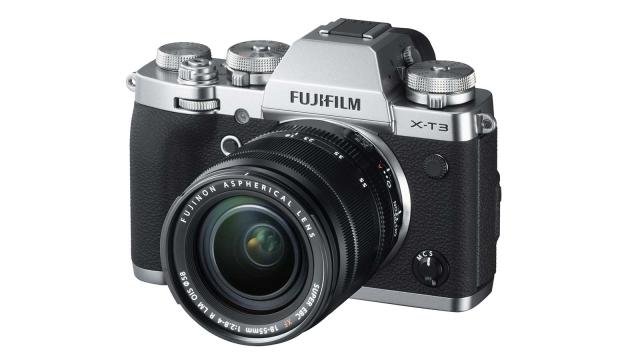Tired of new mirrorless cameras yet? I hope not, because with today’s launch of the new Fujifilm X-T3 and the possible debut of Panasonic’s first full-frame mirrorless camera later this month, there’s going to be a ton of pixel peeping going on between now and the end of the year.
However, unlike Canon and Nikon, Fujifilm is the one camera company that doesn’t seem to be chasing the full-frame bandwagon, as the new X-T3, and its 26.1-MP APS-C sensor is more of an improvement on the X-T2 rather than an all-new system.
The big changes for the X-T3 include a new fourth-gen X-Trans CMOS
4 sensor and X-Processor 4 ISP, “dramatically” improved AF performance, and a much bigger focus on pro-quality video thanks to what Fujifilm claims is the first APS-C mirrorless camera capable of 4K/60fps 10-bit video capture.
But potentially even more important than that is how XT-3 also addresses some of the biggest complaints about the X-T2: its lack of a rear touchscreen and no headphone jack for monitoring audio while shooting video. Previously on the X-T2, in order to get a headphone jack, you needed to buy Fujifilm’s optional battery grip (along with a couple spare batteries), which could end up costing you an extra $US300 ($417) to $US400 ($557).
Those changes alone could have Fujifilm users thinking about upgrading, but on top of that, Fujifilm says its new quad-core CPU enables the X-T3 to refocus and meter light 1.5 times more often than on the X-T2. Even Fujifilm’s eye-tracking AF has be upgraded to support continuous autofocus so you can track moving subjects more easily, while still retaining the 11 fps continuous shooting rate seen on the X-T2.
The X-T3’s EVF has also gotten a boost up from 2.36 million dots on the X-T2 to 3.69 million dots on the X-T3. The X-T3’s standard ISO range has also dropped slightly from 200 to 160, which should give photographers more freedom to adjust picture settings in bright light scenarios. And in a big win for pros who go with an X-T3 over a new Nikon Z7/Z6 or Canon EOS R, Fujifilm’s camera will come with two card slots instead of just one.
Finally, there’s the X-T3’s big advantage in price. Available on September 20th and starting at $US1,500 body only (we have heard that Australian pricing may be around the $2,500 mark but need to confirm), the X-T3 is $US500 to $US700 cheaper than competing cameras from Canon. That’s a gap large enough to spring for the $US1,900 kit with a 18-55mm lens and still have a little cash left over.
[referenced url=”https://gizmodo.com.au/2018/09/canon-hits-back-hard-against-nikon-and-sony-with-the-new-full-frame-eos-r-mirrorless-eos-r/” thumb=”https://i.kinja-img.com/gawker-media/image/upload/t_ku-large/fp1sduxxzljblcanssg0.png” title=”Canon Hits Back Hard Against Nikon And Sony With The New Full Frame Mirrorless EOS R” excerpt=”It’s been a busy summer for camera aficionados with Nikon recently announcing its first high-end mirrorless camera. But now, things are about to get even more hectic thanks to the new Canon EOS R.”]
